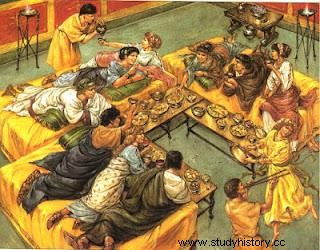
An ancient and sumptuous banquet. The use of the fork at the table established itself in modern times
Just like the spoon (https://www.pilloledistoria.it/8005/storia-moderna/qualche-curiosita-sul-cucchiaio), also the fork has a centuries-old history behind it.
Although already the ancient Romans they used a kind of fork to handle food in the kitchen, it seems that the first fork as we understand it today, that is the one used to bring food to the mouth, has Byzantine origins ; the very useful tool is mentioned for the first time, according to our current knowledge, in reference to the refined wedding banquet between the Greek princess Argillo and the son of the then Doge of Venice, celebrated in 955.
As it is closely linked to Byzantine culture and customs, in the climate of tension resulting from the schism between the Orthodox Church and that of Rome (1054), the fork was for a long time frowned upon by the Catholic hierarchy, who even branded it as an instrument of the devil.
In Italy, forks began to appear more often on tables only from the 14th century, although above all at court and in the wealthiest classes, then in the modern era they slowly spread to other countries of the Old Continent, such as France, where perhaps introduced for the first time by Caterina de 'Medici and was long considered an extravagance by Italianphiles, England and Germany.
During the 1700s, the fork was part, to a large extent at least, of everyone's daily life, including those belonging to the most popular social classes, among which it arrived considerably behind the court and nobility circles.
